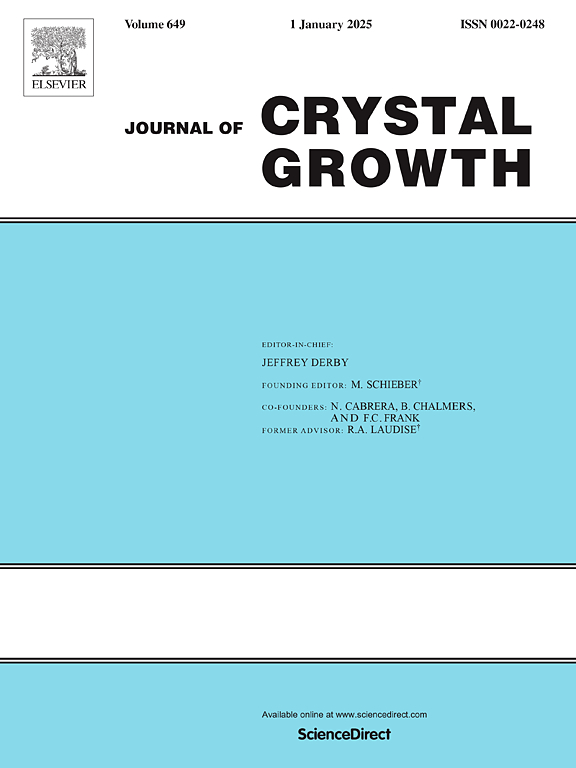Effect of dysprosium concentration on the photocatalytic and electrochemical properties of zirconium ferrite nanoparticles
IF 2
4区 材料科学
Q3 CRYSTALLOGRAPHY
引用次数: 0
Abstract
A novel dysprosium-doped zirconium ferrite was prepared by the chemical precipitation method. The doping concentration of dysprosium was set at 0 %, 2 %, and 4 %. The structural properties, such as crystalline size and strain, were examined. The doping tuned the morphology of the nanoparticles. The band gap of the material decreases as the doping of dysprosium increases. The degradation of methylene blue was examined under natural sunlight and 93.2 % degradation efficiency was achieved at 120 min. The doping enhances the degradation efficiency using the zirconium ferrite catalyst. The electrochemical properties of the prepared nanoparticles as electrodes in a supercapacitor were studied using cyclic voltammetry and the galvanostatic charge–discharge technique. The maximum specific capacitance of ∼ 375F/g was observed at the scan rate of 5 mV/s.
镝浓度对铁酸锆纳米粒子光催化及电化学性能的影响
采用化学沉淀法制备了一种新型掺镝铁氧体锆。镝的掺杂浓度分别为0%、2%和4%。研究了晶体尺寸和应变等结构性能。掺杂调整了纳米颗粒的形态。材料的带隙随着镝掺杂量的增加而减小。在自然光照条件下对亚甲基蓝进行了降解实验,在120 min下,亚甲基蓝的降解率达到了93.2%。该掺杂提高了铁酸锆催化剂的降解效率。采用循环伏安法和恒流充放电技术研究了制备的纳米颗粒作为超级电容器电极的电化学性能。扫描速率为5 mV/s时,最大比电容为~ 375F/g。
本文章由计算机程序翻译,如有差异,请以英文原文为准。
求助全文
约1分钟内获得全文
求助全文
来源期刊

Journal of Crystal Growth
化学-晶体学
CiteScore
3.60
自引率
11.10%
发文量
373
审稿时长
65 days
期刊介绍:
The journal offers a common reference and publication source for workers engaged in research on the experimental and theoretical aspects of crystal growth and its applications, e.g. in devices. Experimental and theoretical contributions are published in the following fields: theory of nucleation and growth, molecular kinetics and transport phenomena, crystallization in viscous media such as polymers and glasses; crystal growth of metals, minerals, semiconductors, superconductors, magnetics, inorganic, organic and biological substances in bulk or as thin films; molecular beam epitaxy, chemical vapor deposition, growth of III-V and II-VI and other semiconductors; characterization of single crystals by physical and chemical methods; apparatus, instrumentation and techniques for crystal growth, and purification methods; multilayer heterostructures and their characterisation with an emphasis on crystal growth and epitaxial aspects of electronic materials. A special feature of the journal is the periodic inclusion of proceedings of symposia and conferences on relevant aspects of crystal growth.
 求助内容:
求助内容: 应助结果提醒方式:
应助结果提醒方式:


